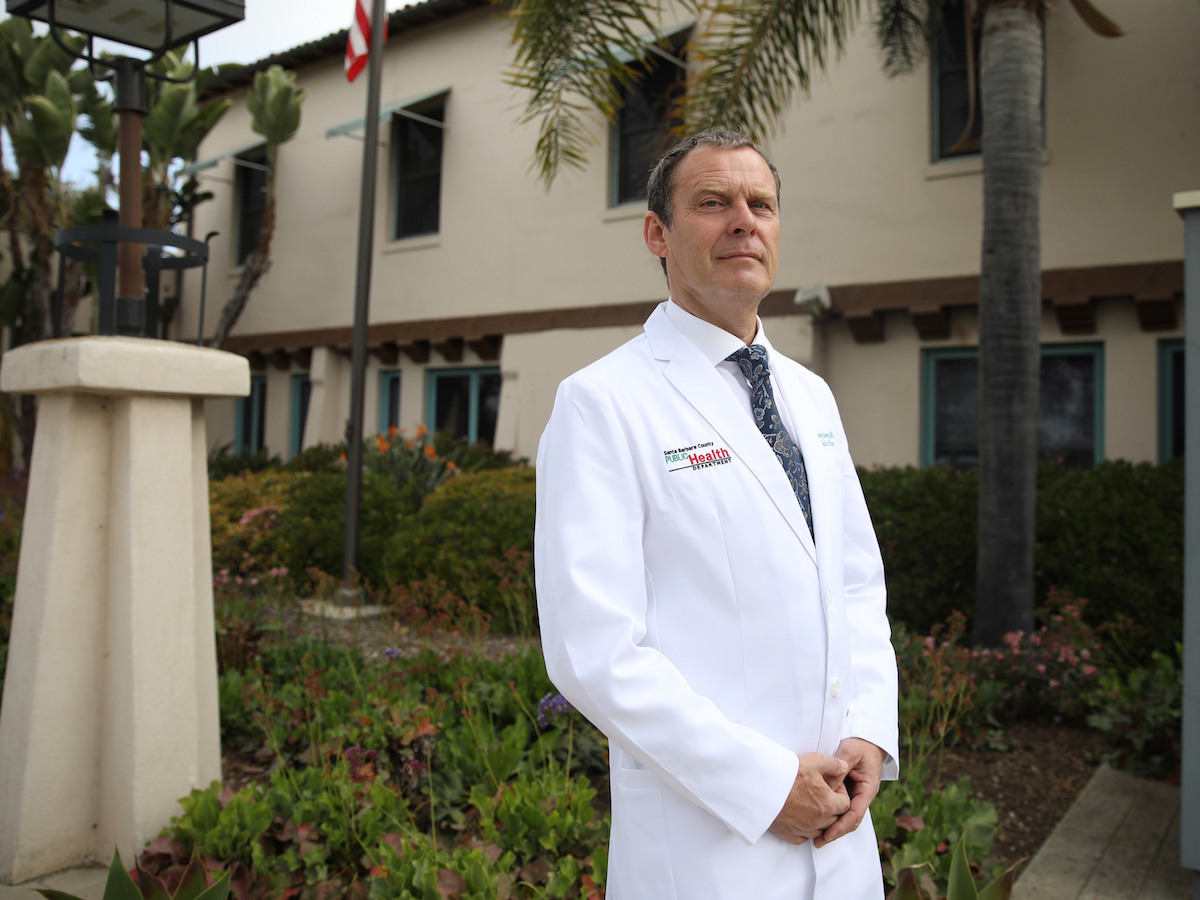COVID Shutdown Ends in Santa Barbara
Mandatory Masking and Social-Distancing Requirements Lifted

After 453 consecutive days on various degrees of state-ordered, pandemic-inspired emergency restrictions, Santa Barbara County Public Health officials breathed a collective sigh of relief this Tuesday and notified the public — via the county supervisors — that the days of mandatory mask-wearing and social distancing are over and done with. Thanks to an edict issued months ago by Governor Gavin Newsom, June 15 marked the first day of the county’s “journey to full recovery,” in the words of Public Health Director Van Do-Reynoso.
The underlying regulatory realities are, of course, far more complicated, with enough exceptions to the rules to keep a flock of attorneys fully employed. Everyone, for example, must still wear masks on all planes, trains, public buses, and ride-sharing vehicles. All K-12 students must wear masks indoors whether they’ve been fully vaccinated or not. At alI mega events — defined as 5,000 people indoors or 10,000 outside — masks must be worn. And private businesses are empowered to require masks for those who can’t provide adequate proof of vaccination. It’s up to the business owners to decide whether a simple yes or no suffices as adequate or whether a vaccination card is necessary.
Do-Reynoso — who has spent the past 15 months running a metaphorical marathon sprint — delivered an abbreviated briefing on the state of the disease using state-generated statistics. It would be, she said with a notable lack of regret, the last time she expected to do so.
Her numbers were strikingly low, but somehow, Do-Reynoso forgot to include the most dramatic detail of all. This Monday, it turns out, Santa Barbara County reported not one single new case of COVID. “We can’t remember a time we had zero cases since before 2020,” exclaimed board chair Bob Nelson. “This is something to celebrate.”
There would be no champagne or confetti, however, no speeches proclaiming victory. In the past 453 days, no fewer than 452 people would be recorded as having died from COVID. Nearly 35,000 got infected. Some sizable subset of that got sick enough to require hospitalization.
COVID has not been an equal-opportunity afflicter, nor have the vaccines been dispensed to Santa Barbara’s many sub-populations proportional to their actual numbers. While Hispanic people make up 48 percent of the county’s total population, they accounted for 59 percent of the cases, 67 percent of the hospitalizations, 50 percent of the deaths, and only 27 percent of the vaccinations. Santa Maria and North County took it on the chin far harder than Santa Barbara and South County.
None of that was addressed at all this Tuesday.
Instead, the supervisors got enmeshed in philosophical debates whether government “should save people who didn’t want to be saved,” as Supervisor Nelson put it. Sparking this debate was Dr. Aimee Smith — with a PhD from MIT in materials science — who argued the coercive powers of the state had been wrongly deployed to force people to get vaccines and wear masks when there was no scientific basis to support either. Likewise, Smith claimed the Centers for Disease Control and Prevention received a direct profit from the dispensation of vaccines and suggested that the whole enterprise was a ruse to strip-mine electronic personal data of millions of Americans on behalf of companies like Google.
Supervisor Gregg Hart exhorted Do-Reynoso and Public Health Officer Dr. Henning Ansorg to refute statements that were “false and untrue.” Ansorg noted that vaccines were necessary because more than half the COVID cases had been spread by people who had no symptoms and thus could not voluntarily restrict their exposure to others. As a public health officer, Ansorg stated, “We have to make uncomfortable and very hard decisions that hurt the freedom of people.” In fighting the pandemic, he said, vaccines clearly demonstrated their effectiveness.
Supervisor Steve Lavagnino, the former Republican who represents Santa Maria, argued that “protecting people who don’t want to be protected is pretty much the role of government.” As a teenager, he recalled, he refused to buckle his seat belt; they rumpled his clothes, he explained. Then he got a ticket. Since then, Lavagnino said he always buckles up. “Is the government changing my behavior?” he asked. “Somebody needed to do it.”
With that said, 55 percent of the county’s eligible population has been fully vaccinated. Herd immunity, according to Ansorg, is roughly 75 percent.
Support the Santa Barbara Independent through a long-term or a single contribution.


